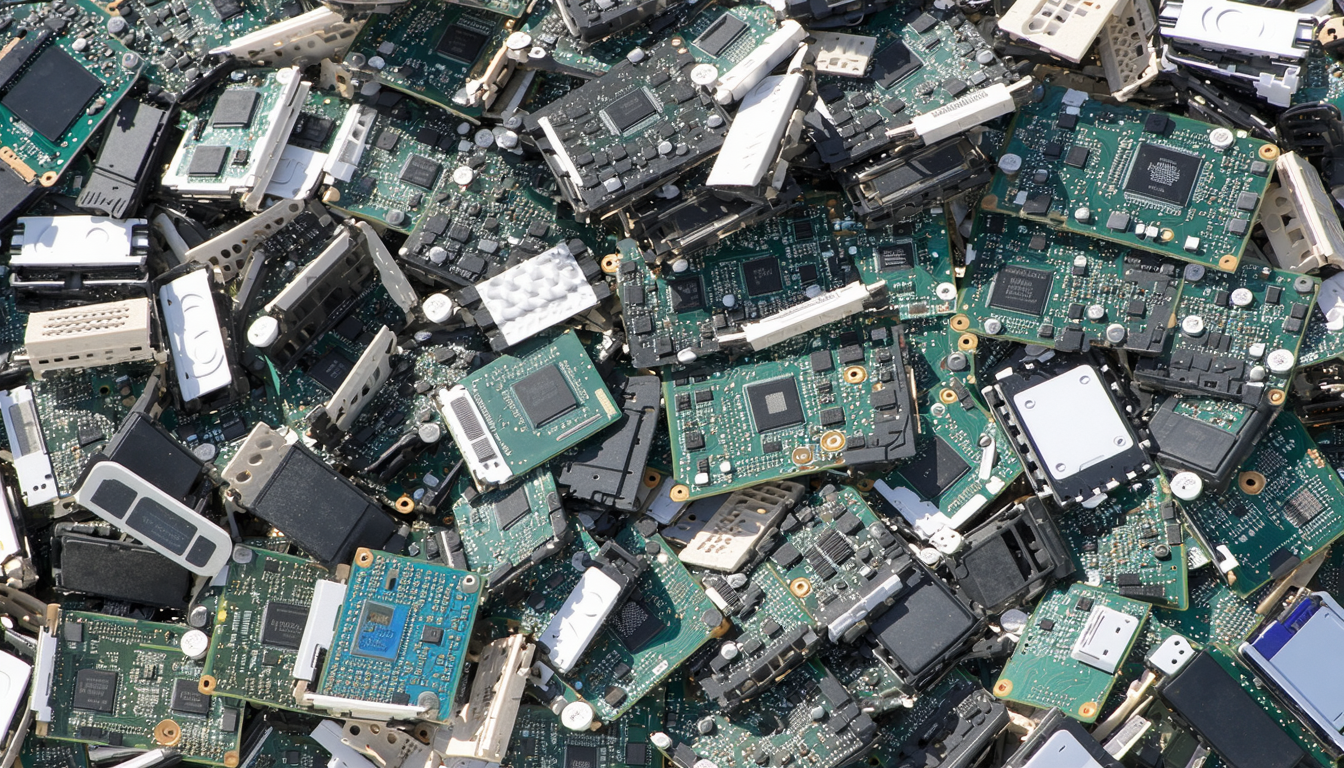Introduction
In an era where technology evolves at lightning speed, electronic waste, or e-waste, has become a pressing environmental challenge in the United States. With millions of devices discarded annually, recycling e-waste is often seen as a sustainable solution. However, hidden dangers lurk behind this seemingly eco-friendly practice. From toxic chemical exposure to data security risks, the process of recycling electronics poses significant threats to workers, communities, and the environment. This article explores what dangers are associated with recycling e-waste and why addressing these risks is critical for a safer future.
The Growing E-Waste Crisis in the United States
The US generates over 6.9 million metric tons of e-waste each year, according to the Environmental Protection Agency (EPA). This includes discarded smartphones, laptops, batteries, and other electronic devices packed with hazardous materials like lead, mercury, and cadmium. While recycling aims to recover valuable components and reduce landfill waste, improper handling during the process can unleash severe consequences. Many Americans are unaware of these risks, assuming that recycling is always a safe and green choice.
The significance of this issue lies in its scale. With only about 12.5% of e-waste being recycled properly, as per a 2022 EPA report, the majority ends up in landfills or is processed under unsafe conditions, amplifying health and environmental hazards.
Key Dangers of Recycling E-Waste
Understanding what dangers are associated with recycling e-waste starts with recognizing the toxic nature of electronic components. When devices are dismantled without proper safeguards, harmful substances can be released into the air, soil, and water.
- Toxic Chemical Exposure: E-waste contains heavy metals like lead and mercury, which can cause neurological damage and respiratory issues. Workers in recycling facilities often face direct exposure due to inadequate protective gear.
- Environmental Contamination: Improper disposal or processing can lead to chemicals leaching into groundwater, affecting entire ecosystems. A 2021 study by the University of California found traces of e-waste pollutants in water sources near recycling hubs.
- Fire Hazards: Lithium-ion batteries in electronics pose a risk of spontaneous combustion if mishandled during recycling. Such incidents have been documented in several US facilities over the past decade.
- Data Security Risks: Electronics often store sensitive personal information. If not properly wiped before recycling, data breaches can occur, exposing individuals to identity theft.
According to Dr. Emily Harper, an environmental scientist at Stanford University, “The lack of standardized e-waste recycling protocols in the US exacerbates these dangers. Without strict oversight, both human health and the environment remain at risk.”
Impact on Stakeholders
The dangers of e-waste recycling affect various groups across the nation. Workers in processing plants are on the front lines, often exposed to hazardous conditions without adequate training or equipment. Communities near recycling facilities also bear the brunt of pollution, with reports of higher rates of respiratory illnesses in such areas. Consumers, meanwhile, face the threat of data breaches if their devices aren’t handled securely during the recycling process.
Local governments struggle with enforcement as well. Many states lack comprehensive e-waste laws, leaving small businesses and municipalities to navigate a patchwork of regulations. This inconsistency hinders efforts to mitigate risks effectively.
Addressing the Challenges: What Lies Ahead?
The significance of tackling what dangers are associated with recycling e-waste cannot be overstated. As technology consumption grows, so does the volume of discarded electronics. Without intervention, the health and environmental toll will only worsen. Experts suggest that stricter federal regulations, improved worker safety standards, and public awareness campaigns could pave the way for safer practices.
There are differing views on how to approach this issue. Some advocate for exporting e-waste to countries with cheaper labor for processing, while others argue this merely shifts the problem elsewhere, often to nations with even weaker regulations. A balanced solution may lie in investing in domestic infrastructure for safe recycling while promoting manufacturer responsibility programs.
Conclusion
Recycling e-waste holds immense potential to conserve resources and reduce landfill waste in the United States. However, the dangers tied to this process—ranging from toxic exposure to environmental harm—demand urgent attention. By understanding what dangers are associated with recycling e-waste, stakeholders can push for better policies and practices. The path forward requires collaboration between government, industry, and consumers to ensure that sustainability does not come at the cost of safety.
Frequently Asked Questions (FAQ)
1. What are the main dangers of recycling e-waste?
The primary risks include exposure to toxic chemicals like lead and mercury, environmental contamination from improper disposal, fire hazards from batteries, and data security breaches from un wiped devices.
2. How much e-waste does the US produce annually?
The US generates over 6.9 million metric tons of e-waste each year, with only a small fraction being recycled responsibly, according to EPA data.
3. How can consumers recycle electronics safely?
Consumers should use certified e-waste recyclers, ensure personal data is erased before disposal, and check local regulations for proper drop-off locations.
4. Are there laws regulating e-waste recycling in the US?
While some states have specific e-waste laws, there is no comprehensive federal regulation, leading to inconsistent standards across the country.

